december-top.html
1796 A fleet of French ships turned back to head for France due to severe storms on this day in 1796. Theobald Wolfe Tone was on board, and had gathered the support of the French to help the United Irishmen rise up against the British rule.
However, the fleet of more than 40 ships carrying 15,000 men had to turn back after waiting for days for the storm to subside. Two years later the uprising did take place, and Wolfe Tone was again on board a French ship with military support for the United Irishmen.
This time the ships failed to get to Ireland again, being intercepted by the British Navy off the coast of Donegal. Wolfe Tone was arrested and sentenced to death.
Click to read Theobald Wolfe Tone quotes

* * *
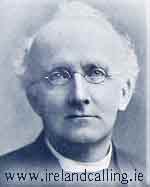 1821 Samuel Haughton was born in County Carlow in this day in 1821. He was a scientist and mathematician. He studied at Dublin and also received honourary degrees from Oxford, Cambridge and Edinburgh. In 1847, he was ordained as a priest but he rarely preached.
1821 Samuel Haughton was born in County Carlow in this day in 1821. He was a scientist and mathematician. He studied at Dublin and also received honourary degrees from Oxford, Cambridge and Edinburgh. In 1847, he was ordained as a priest but he rarely preached.
Haughton was the man who worked out the exact length of drop needed to hang a man in the most humane way possible. Hanging was still a common punishment for criminals at the time, and although it is an unpleasant study for Haughton to have taken on, his findings prevented the suffering of thousands.
The method became known as the ‘Standard Drop’, and snapped the neck of the person being hanged instantly, causing paralysis and normally unconsciousness. The previous method, known as the ‘Short Drop’, often resulted in victims suffering and struggling for up to 20 minutes before they died.
Click here to read about more Irish scientists
* * *
1866 Maud Gonne was born in Hampshire, England on this day in 1866. She was an Irish nationalist and the woman that WB Yeats fell in love with and tried to woo for decades. Unfortunately for Yeats, the feeling wasn’t mutual, although they did share one night of passion together.
Gonne was the inspiration for many of Yeats’ poem, including When You Are Old and He Wishes for the Cloths of Heaven.
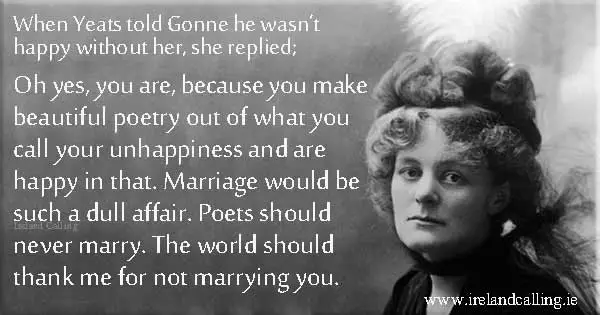
She spent much of her childhood at a boarding school in France before moving to Dublin with her father, who was posted there by the British Army. Gonne loved Ireland and its people. She saw the injustices they had suffered under centuries of British rule, and vowed to fight to help the country gain its independence.
She returned to France after her father died, and married Lucien Millevoye, a right-wing politician. They had a son and a daughter, but the son died as a baby. Gonne travelled around Britain and America campaigning for the Irish nationalist’s cause, and the release of political prisoners. She met fellow nationalist WB Yeats, who instantly fell in love with her.
Her relationship with Millevoye had ended but she turned down numerous marriage proposals from Yeats. They were close though, and Gonne played Cathleen in Yeats’ play, The Old Woman of Ireland, who mourns the loss of her four provinces to the British settlers. She set up Inghinidhe na hÉireann (Daughters of Ireland), a group of female nationalists who were not able to assert any influence in similar male dominated organisations.
In 1903, Gonne married Irish soldier John MacBride and had a son. This was a blow to Yeats, who had been rejected by Gonne several times and also considered MacBride to be a thug, not an intellect like him. The marriage broke down after Gonne accused MacBride of domestic abuse and abuse of her then-11-year-old daughter, Iseult.
Gonne went to France to escape MacBride, and didn’t return to Ireland after he was executed for his part in the 1916 Easter Rising. Yeats had another go at winning Gonne’s heart but again she turned down his marriage proposal. In his confused state, Yeats proposed to Iseult, Gonne’s daughter, now 22, but she also said no.
Gonne settled in Dublin and continued to work for the Irish nationalist cause. She didn’t marry again. Iseult was caught hiding a German soldier during the Second World War but was acquitted. Séan MacBride was an active Irish politician and won the Nobel Peace Prize in 1974.
Click here to read more about the relationship between WB Yeats and Maud Gonne
Click here to read the poem When You Are Old
Click here to read the poem He Wishes for the Cloths of Heaven

* * *
1957 Mary Raftery was born in Dublin on this day in 1957. She was an investigative journalist, who wrote the documentary series States of Fear, which uncovered much of the abuse carried out on children in the Irish childcare system. Raftery wrote a book on the subject too, called Suffer the Little Children.
Her work created a national outcry from the Irish public, and pressured the government into launching an investigation into the matter. The Murphy Report was published in 2009, revealed that there had been a consistent ‘covering up’ of child abuse carried out by Catholic priests in order to protect the reputation of the Church.
* * *
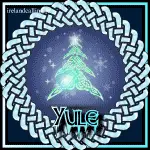 Today is the Winter Solstice, the shortest day and longest night of the year in Ireland. It also signifies the beginning of the ancient Celtic Yule festival.
Today is the Winter Solstice, the shortest day and longest night of the year in Ireland. It also signifies the beginning of the ancient Celtic Yule festival.
Click here to read about the ancient Celtic beliefs of Yule
Click to read about all eight of ancient Celtic festivals that make up a year
Click here to see some of the beautiful designs of the Celtic festivals available in the Ireland Calling store
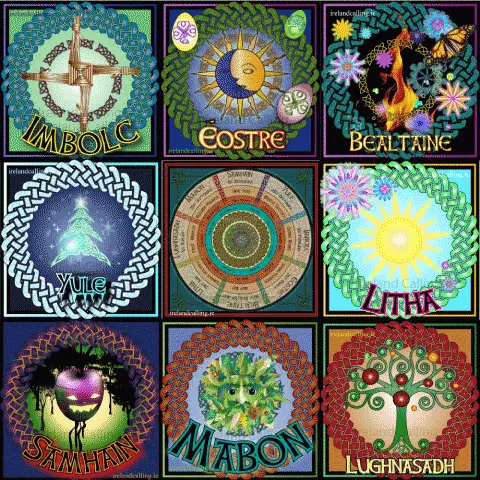
* * *
Today is one of the best days of the year to visit the ancient Irish tomb Newgrange. It is the biggest attraction of the ancient burial grounds Brú na Bóinne in County Meath.
The 21st December is the middle of a six-day period of the winter solstice, when the sun rises at such an angle that it bathes the tomb with light through a narrow gap in the roof.
The demand to see the breath-taking event is so high, that officials at the Newgrange site have to draw a lottery from thousands of hopeful entrants to decide who can enter the tomb. It is only big enough to hold about 20 people, so 10 lucky winners plus their ten luckier guests get to see the magical illumination.
Newgrange is one of Ireland’s top tourist attractions, both with overseas visitors and Irish natives.
Click for more about Newgrange
Click for more about Brú na Bóinne
Click here to read how Newgrange was named Ireland’s most important historical monument
Click here to see where your cousins are likely to take you in Ireland
Click here to read about more holiday attractions in Ireland
Click here to read about the ancient Irish tomb builders
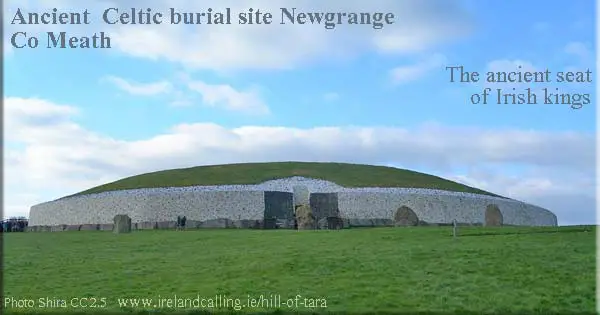
december-bottom.html